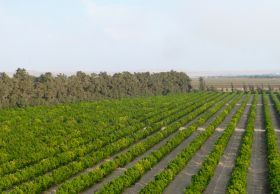Peru Fresh Produce
Promotional campaign will target UK suppliers and consumers after quinoa imports rose by 50% over one year
The Peru Trade & Investment Office has launched its first campaign to promote Peruvian quinoa in the UK market as imports reach an all time high.

Imports of Peruvian quinoa into the UK rose by 50% between 2013 and 2014, totaling $13 million (£8.5m) last year.
The new campaign will target consumers and industry with information about the varieties of quinoa, particularly red and black, as well as emphasising how quinoa production supports indigenous communities in the Peruvian Andes.
It will also focus on the health attributes of quinoa such as its high protein content and antioxidant levels through engaging with consumer and trade media, bloggers, recipe development and social media, alongside reaching out to UK quinoa suppliers and Peruvian restaurants.
“Quinoa is one of Peru’s most promising exports to the UK market, and the Trade & Investment Office will be supporting it with a promotional push for the first time this year,” said Jaime Cardenas, director of the Peru Trade and Investment Office.
“We have seen an international boom in this protein-rich food, as interest in healthier eating has increased in markets around the world. Here in Britain, this has been accompanied by significant growth in Peruvian cuisine.”
Peru is the world’s largest exporter of quinoa, exporting a total of 36,265 tonnes in 2014, accounting for 45% of world exports, followed by Bolivia with 29,505 tonnes (35%).
Quinoa is indigenous to the Andes region of South America.
Producer association ProCitrus says shipments to all markets will rise as a result
Peruvian citrus exports are set to reach 115,000 tonnes this year, an increase on 20% on 2013, according to citrus growers association ProCitrus. This is double the increase originally forecast by the association earlier this year.
ProCitrus CEO Sergio del Castillo said the estimate was revised in the light of more accurate estimates being available on output, fruit sizes and export volumes.

“ProCitrus makes an estimate after the physiological fall of the various varieties in December, but sometimes these estimates are somewhat imprecise and we have to wait until April or May to see how the fruit evolves after the summer,” he told Andina.
Del Castillo added that the higher volume would mean more fruit being shipped to all markets.
The sharp rise in Peruvian citrus exports in the first six months of 2014 is partly due to the increase in shipments of early season varieties. “Last season, domestic prices were higher during the early part of the season than on international markets, so many growers channelled their production to the local market,” del Castillo, told Fruitnet. “This year has seen a significant rise in output which, coupled with the earlier than usual start to the season, has resulted in far higher volumes going for export.”
Peru is the fourth biggest citrus producer in the Southern Hemisphere, with some 60,000ha generating more than 1m tonnes annually. Of this, only around one-tenth goes for export, the rest being consumed domestically both as juice and fresh.
Europe and Canada are the biggest export markets, however companies are now looking to increase mandarin shipments to Asia. “We’re hopeful that in 2015 the phytosanitary protocols will be established for shipments to Japan,” del Castillo said.